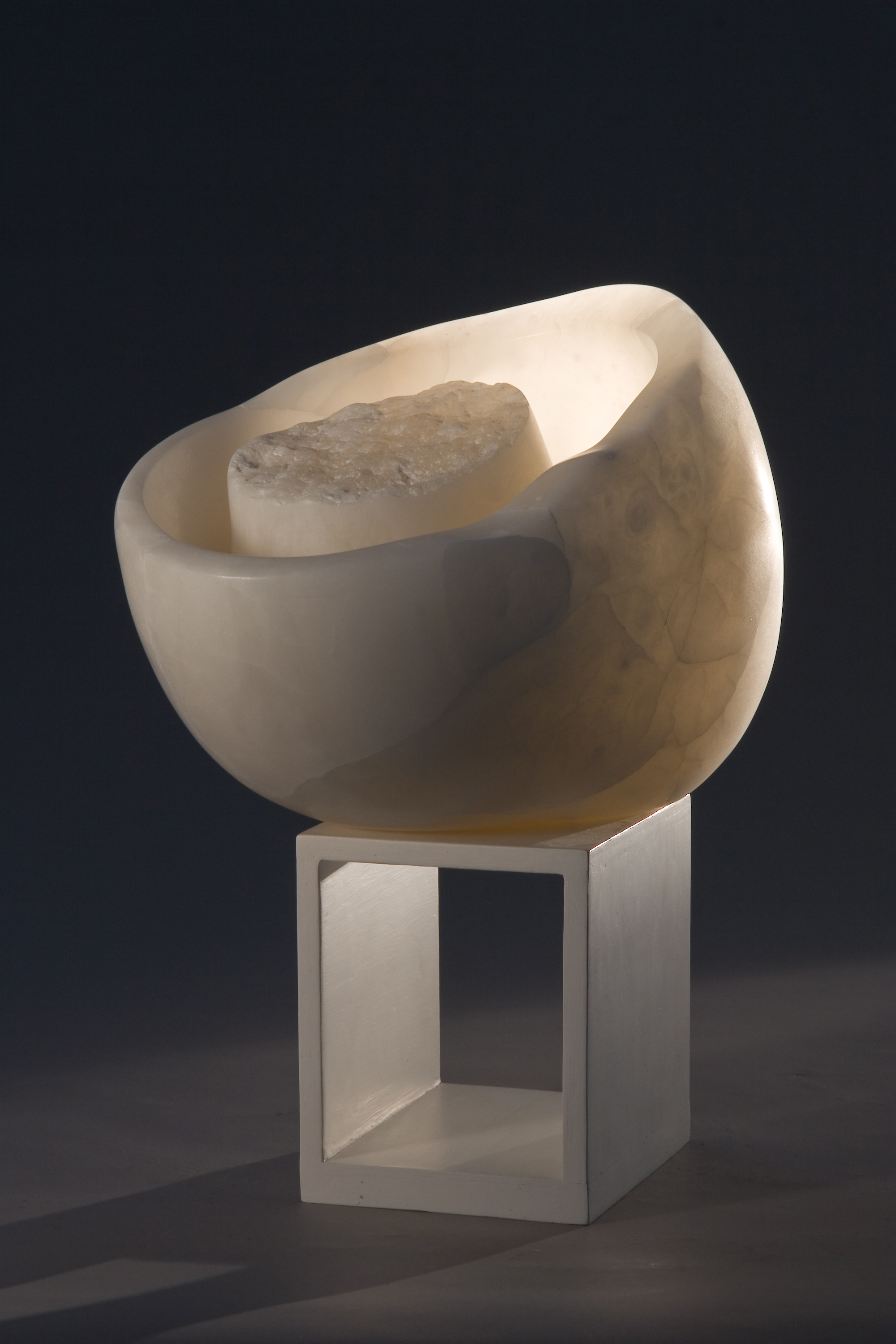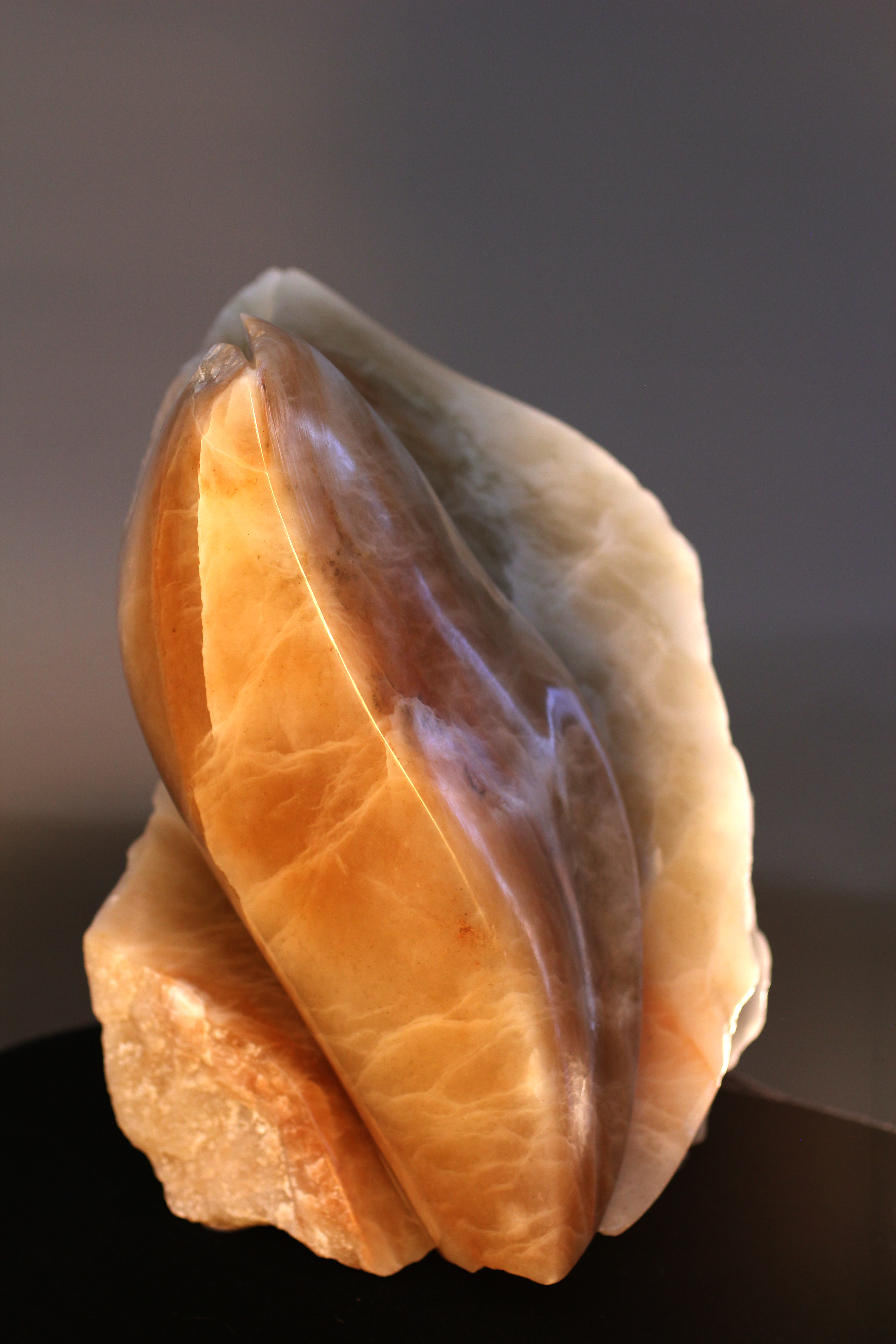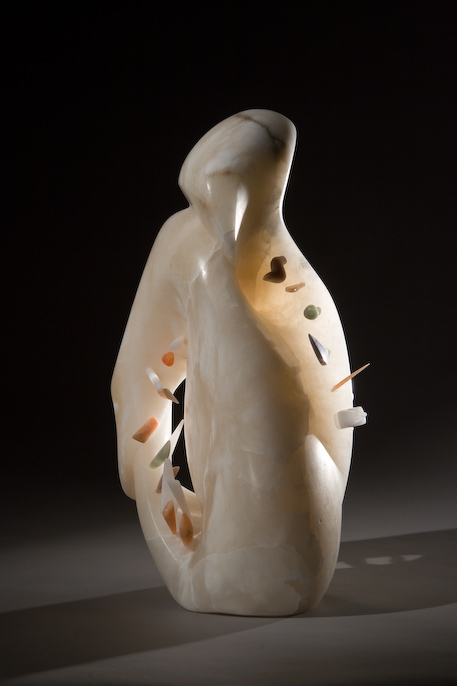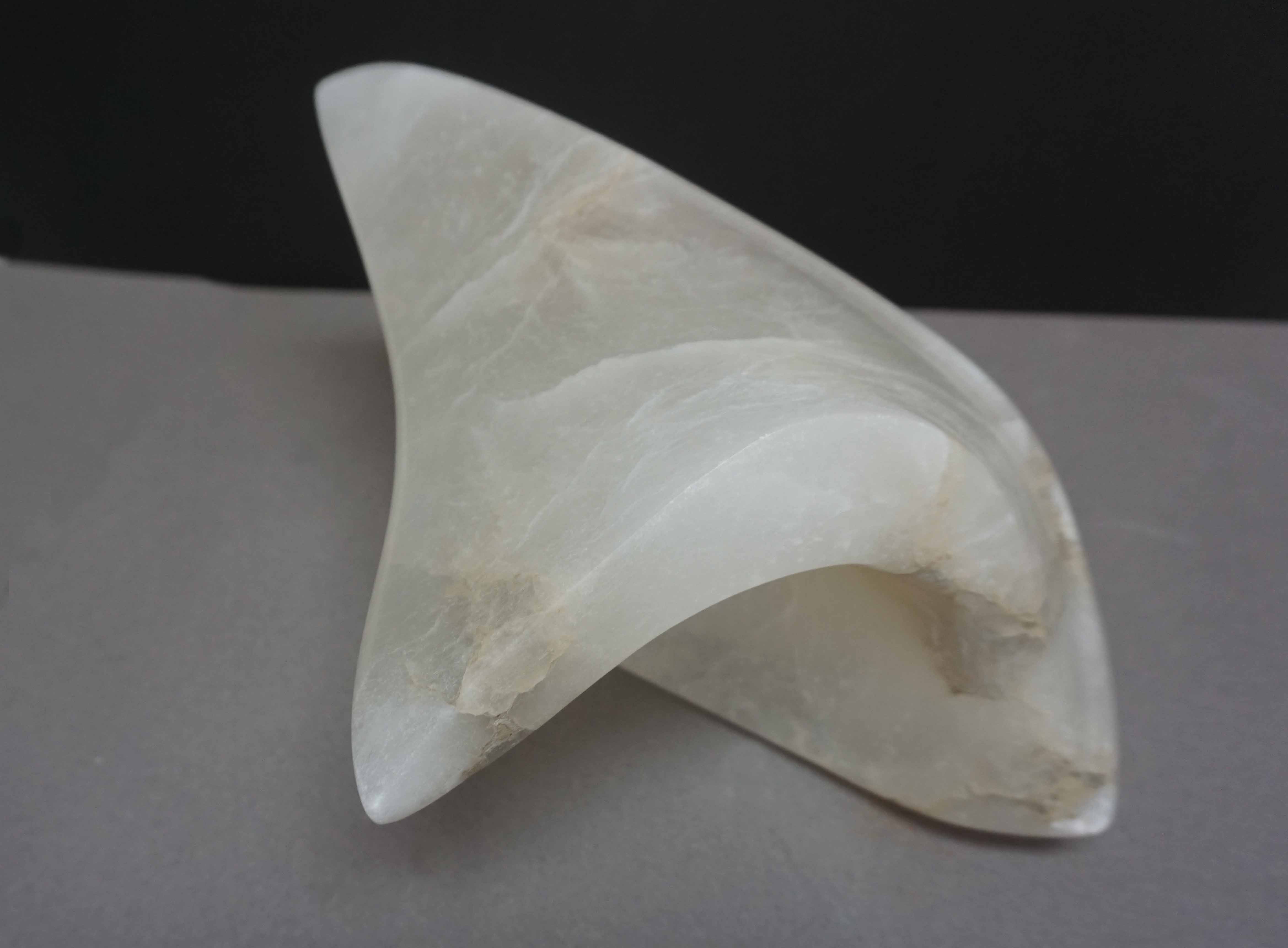Life
Early Years
Barbara Stanczak – Life
I was born in Hamm, Westfalen, in the middle of World War II, in the middle of the industrial center of Germany, in the middle of bombing missions to eliminate Germany’s industrial power.
My father, Dr. Phil. Bernhard Meerpohl, was in the war somewhere – while my mother, Dr. med. Doris Maud Meerpohl – Lamers was working as a physician in a hospital in Hamm and worrying about her three little children at home.
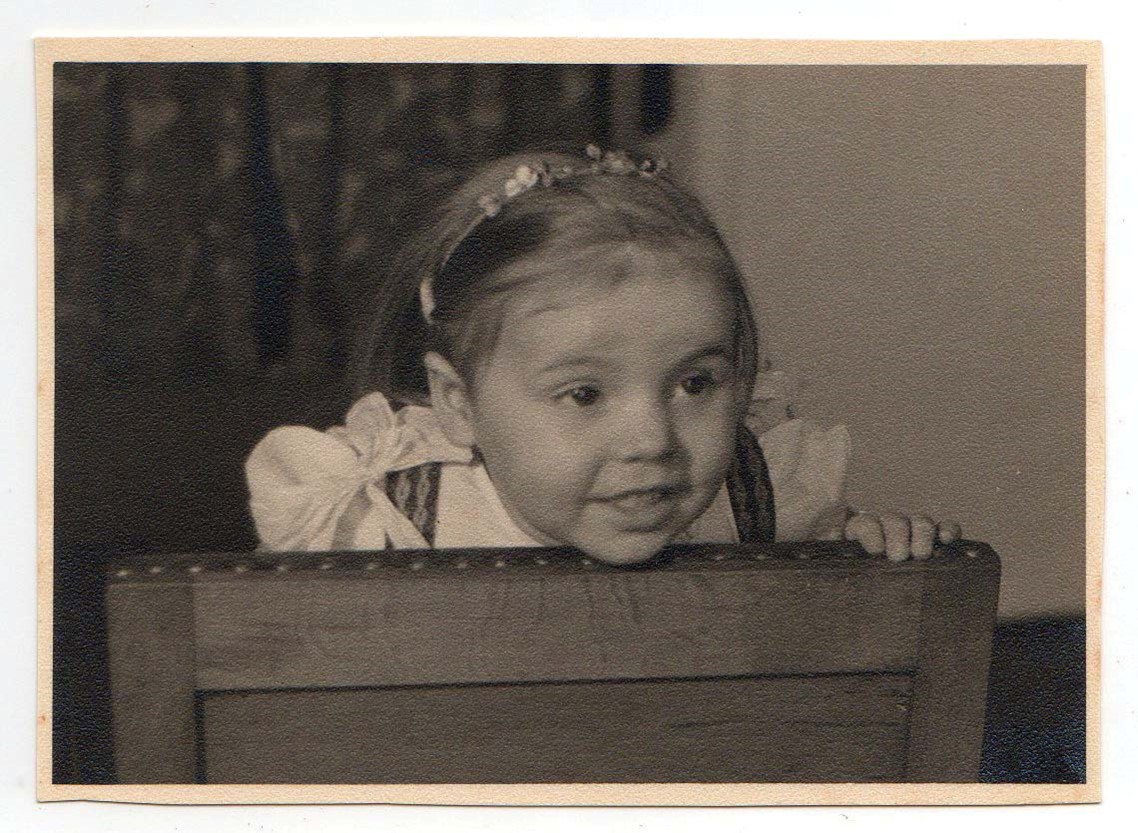

During the worst times of the war, I was sent to live with relatives in Lethmate, a safer region in the Sauerland. I was often sick and lacking on food. I remember spending hours and days in a cramped bomb shelter with strangers praying and weeping while being hung from the low ceiling in a kind of net to restrain my endless energy and curiosity.
In 1945 my mother with her three children moved to the village of Vosswinkel in the beautiful, low-hilled Sauerland, where she was the only physician for many miles around. We lived in an unheated shack, but we could roam freely in the surrounding hills and nature imprinted me with its magnetic draw.
My father returned from the war broken in body and spirit. He had been captured in Tunesia, Africa, fighting with the Rommel Corps, and had spent three years as a Prisoner of War in Texas forced to pick cotton.
In 1947 the family moved to Muenster in Westfalen and assembled a small “do-it yourself” wooden house in the back of the maternal grandparent’s property who had emigrated to the States in 1924; the house was filled with squatters.
My father died of Brain Cancer a few years later, just when the family had established a bit of normalcy in their lives. My father’s death put me in a spiral of loneliness, depression, and failure.

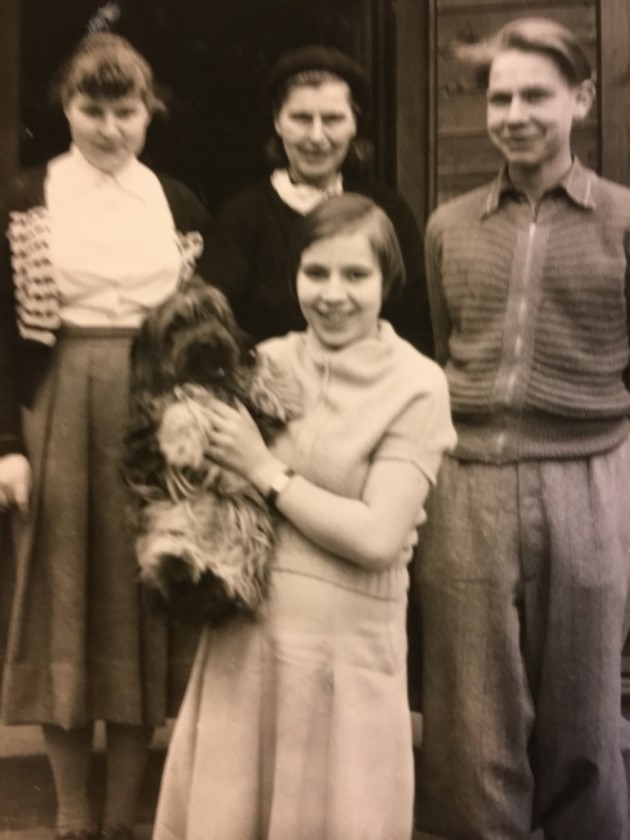
1950's
Because my mother could not handle three “impossible” teenagers plus her medical practice at once, my sister and I were placed in a religious boarding school for girls, tucked away from friends, animals, nature, and family. It was very difficult, but fortuitously, I had an amazing art teacher, Tisa von der Schulenburg, who supported me and opened my heart and hands to metal embossing, ceramics and all skills of art making. Pursuing art in all its forms and manifestations became my focus and saving grace.
In 1958, the family was back together in Muenster, I went to the Werkkunst Schule, the school of arts and crafts, where I studied weaving, drawing, and enameling while earning my first money as an apprentice to a respected artist, laying a forty-foot-tall mosaic for a local church.
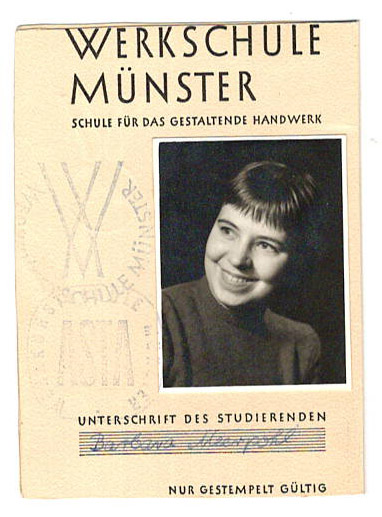
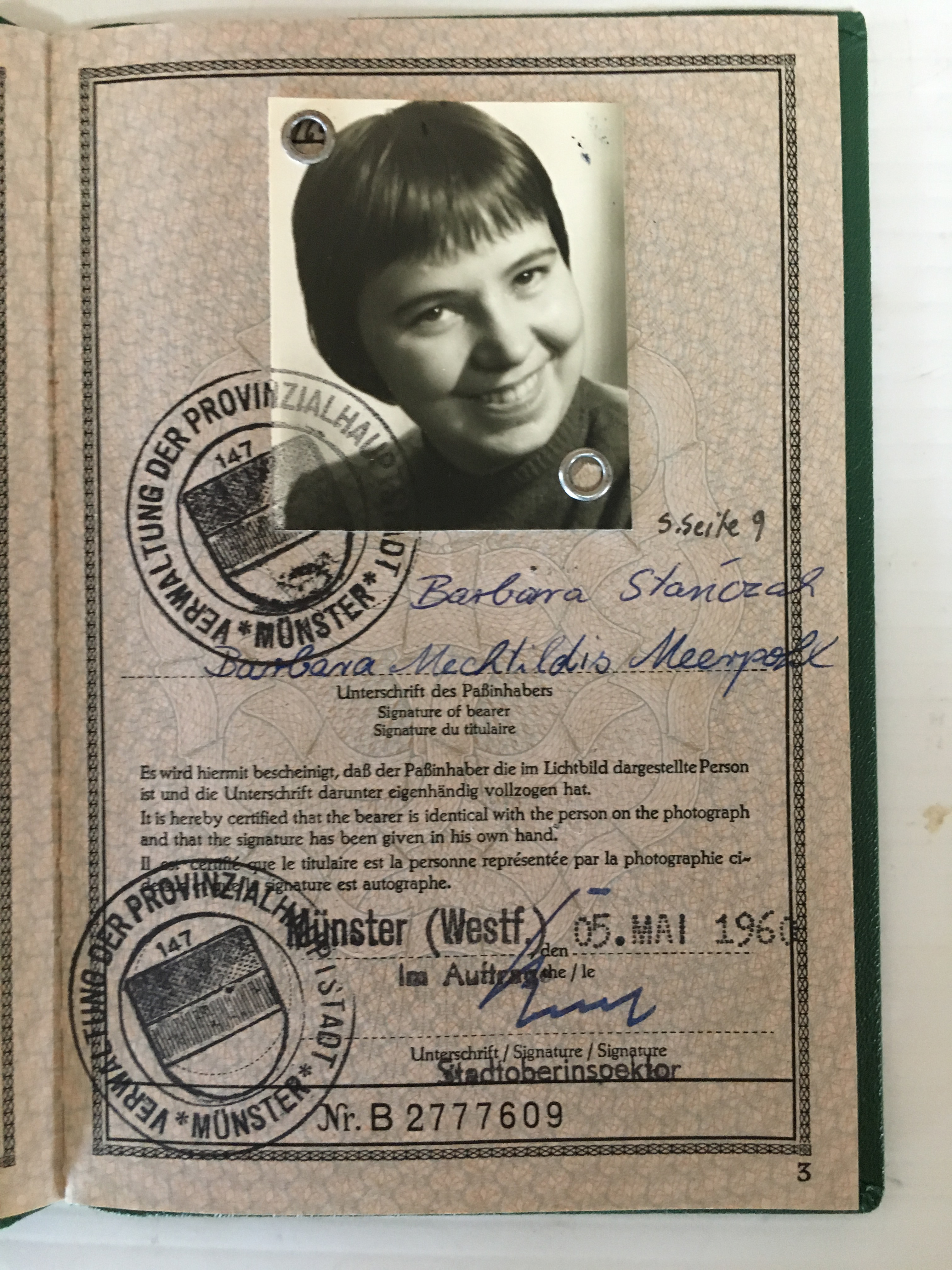
Since my family of artists was scattered all around the world, it was not a surprise that I was offered the opportunity to help my grandfather Gerhard Lamers in America - who was a fresco painter in his 90’s and was going blind – to finish a church fresco in Cincinnati, Ohio. I was adventurous and I responded very positively to the psychological freedom I encountered in America, - the opposite from the submissive attitude required from young people in Germany at that time. I enrolled in the Art Academy of Cincinnati where I studied painting, drawing, sculpting, print making as well as graphic and commercial art. I did very well and won scholarships in painting, graphic design, and sculpture.
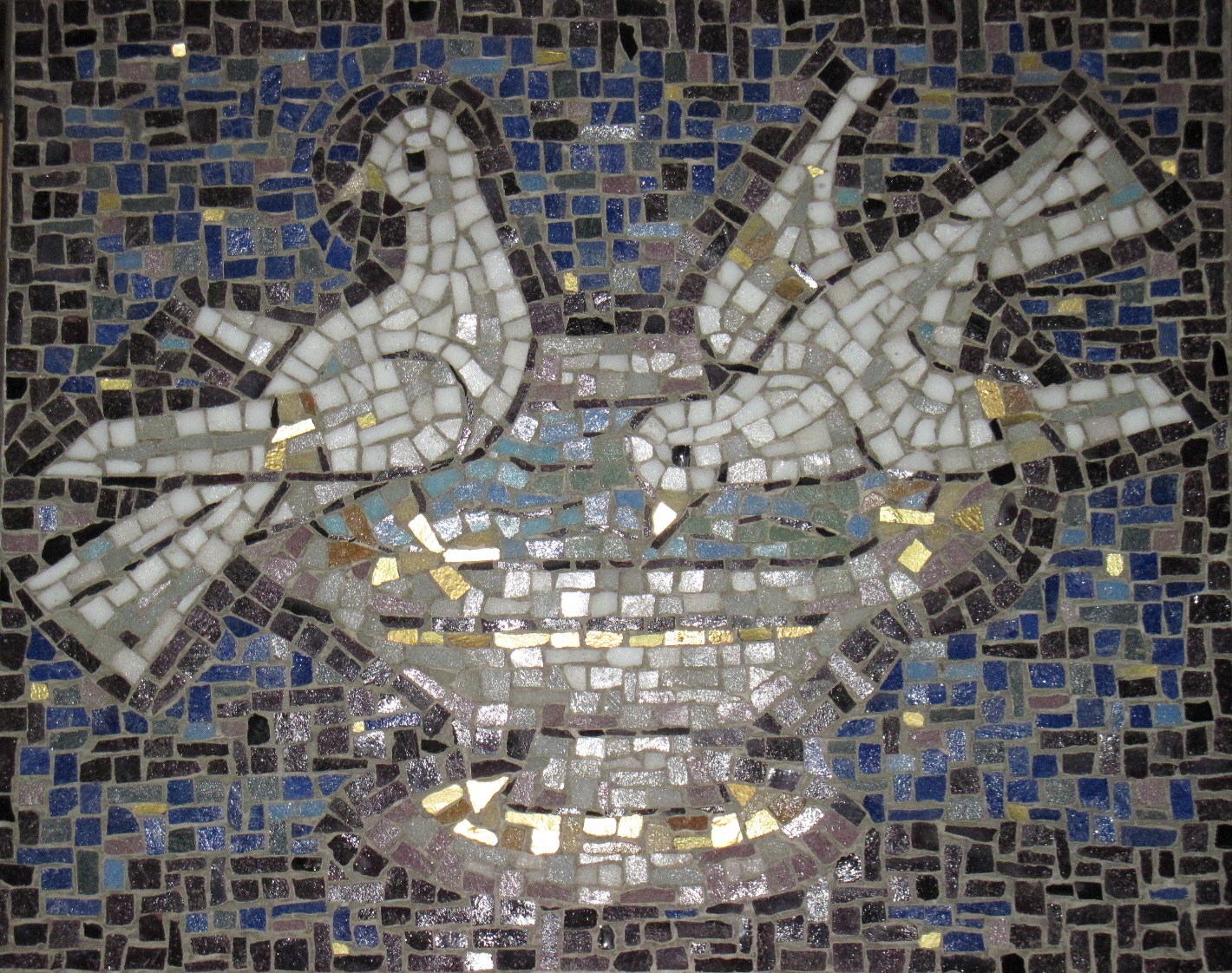
1960's

Julian Stanczak was my teacher in drawing and painting at the Cincinnati Art Academy. We fell in love and married in Germany in 1963

When in 1964 our daughter Danusia was born, motherhood became my primary obligation besides attending night school at the Xavier University in Cincinnati - as the first female in a strict, religious boy school.
We moved to Cleveland, Ohio, when Julian got a job offer from the Cleveland Institute of Art - his Alma Mater - in 1965. I attended Case Western Reserve University, studying German Literature, later switching to Art Education and Art History.
In 1970, our son Christopher arrived. Since Julian was not interested in paperwork, I started managing Julian’s archives, served as his secretary and studio assistant. At that time, I only had a small place to work and focused on collages, assemblages and small two- and three- dimensional constructions in various materials which soon liberated themselves from the traditional flat rectangular surface
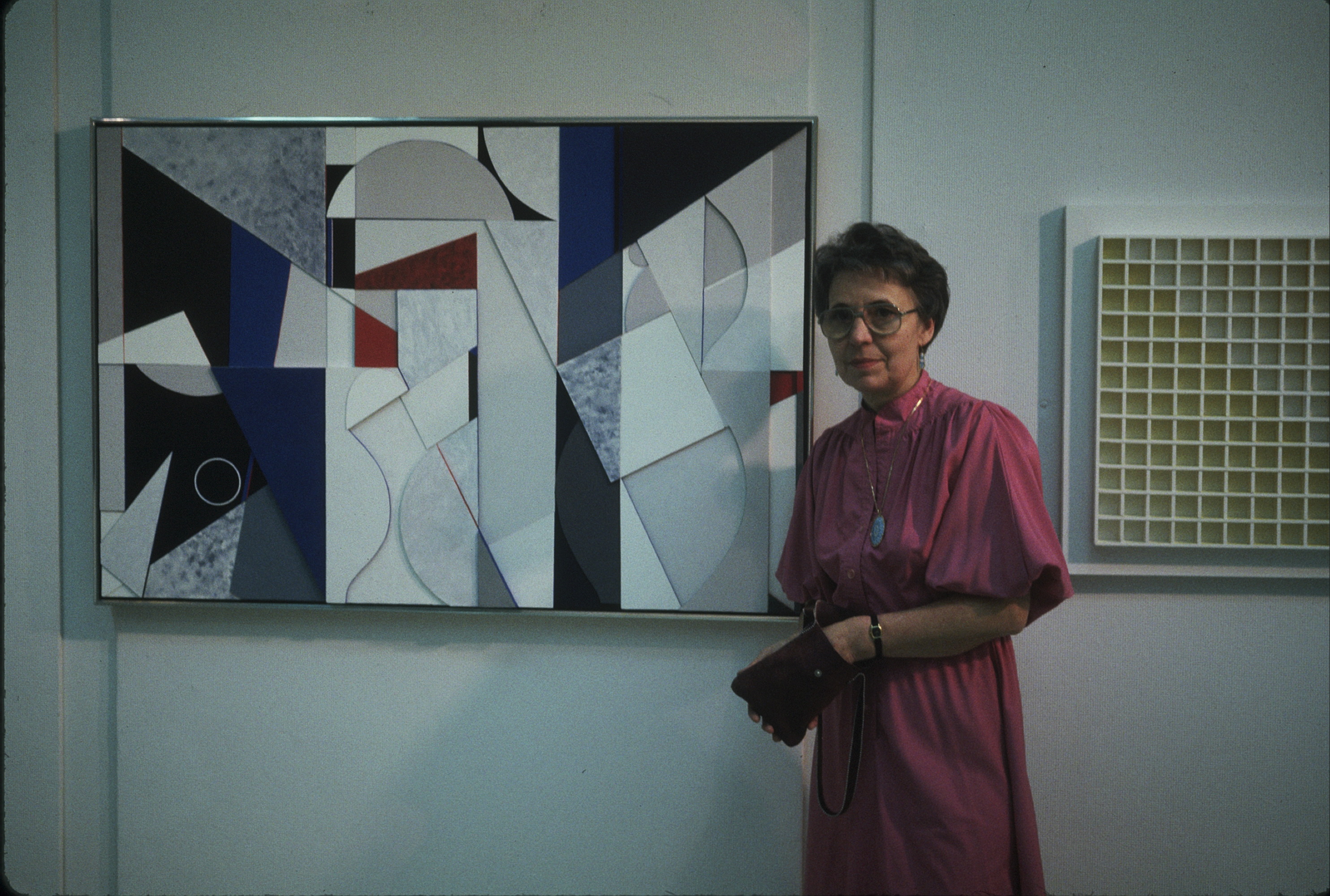
1970s


In 1975, I started my 37-year teaching career at the Cleveland Institute of Art, first teaching night school and a year later, then day classes as Foundation Design instructor. I loved the young people and tried hard to communicate my joy and understanding of art making, color and composition and material explorations.
My paintings at that point in time had been nature inspired fields of color with textures of sand, mica and graphite for reflectiveness and mark making: explored encaustic, melting with fire color layers of wax and dry pigments into intense color fusions likened only to the Aurora Borealis. From early on, I had embraced abstraction through simplification and ordering of visual actions. When digital cameras became available, I pursued enthusiastically my fascination with nature and built a repertoire of forms, textures and color combinations for future reference and inspiration. When Julian’s paintings became more and more in demand, I was able to contribute to his career as curator of his exhibitions and as producer and designer of his work in books and catalogues. Julian in turn was always there to help me with advice and support and a lot of teasing.

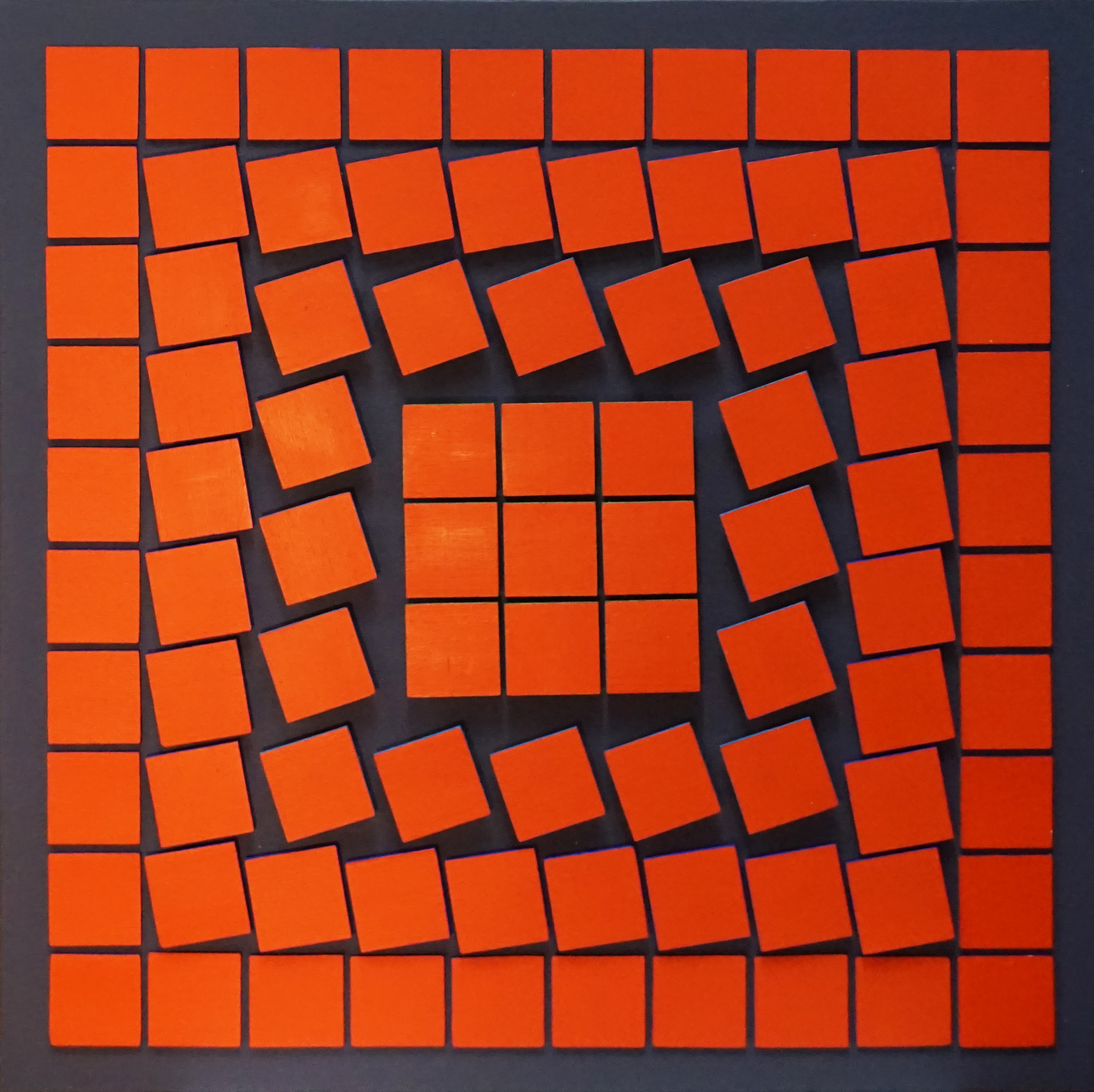
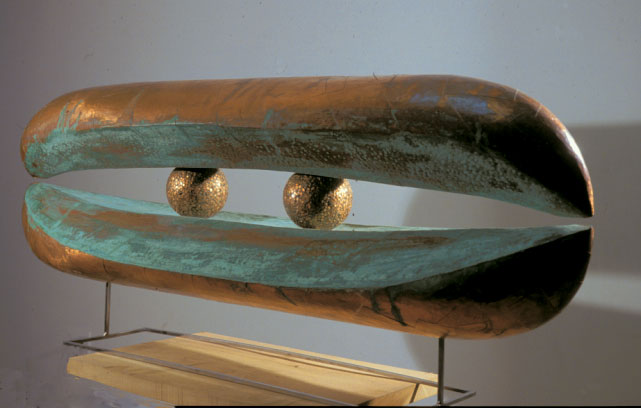
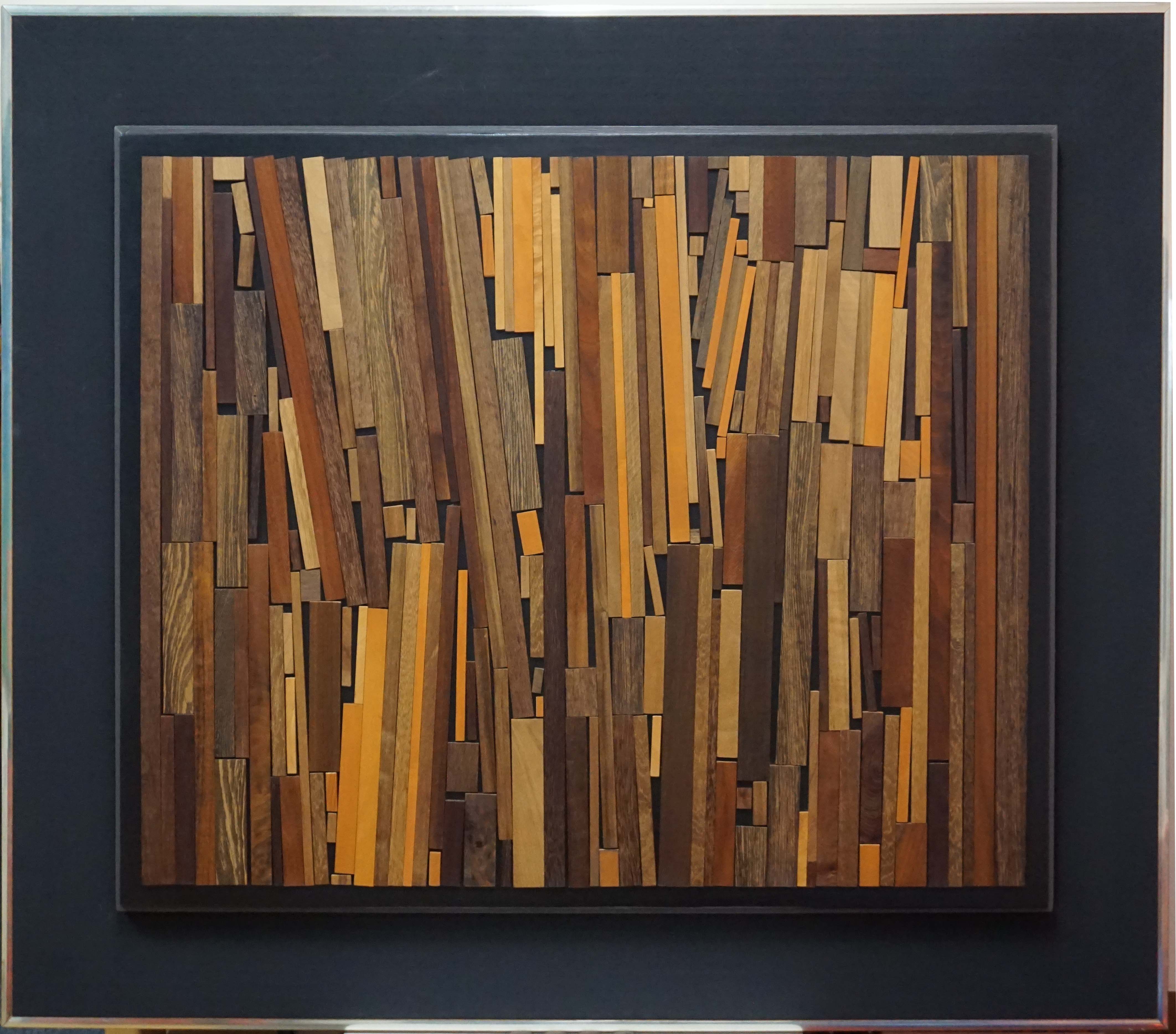

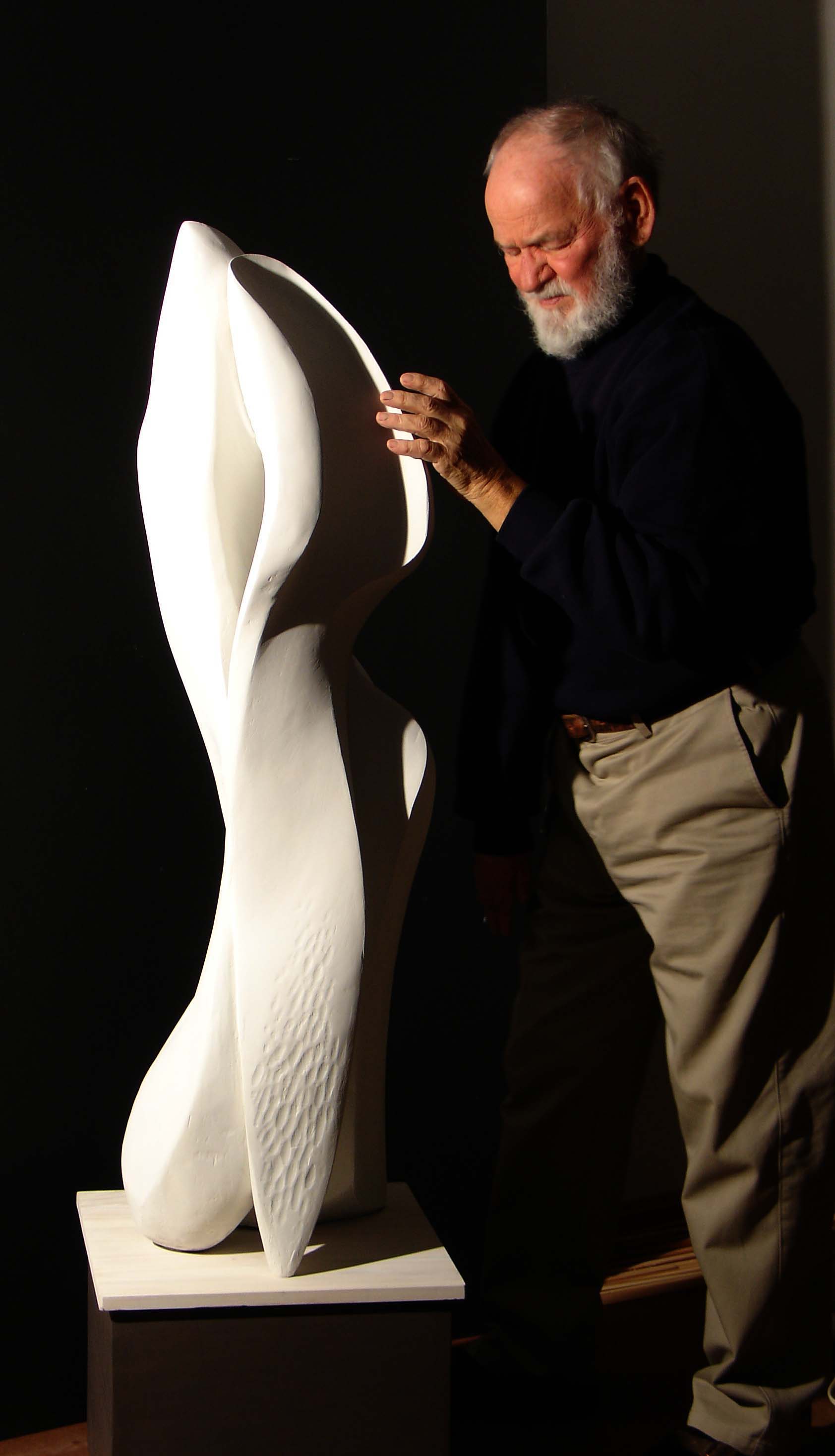
1980's - Now
In the 1980’s, I decided to devote myself with singular focus to carving in wood and stone, finding fulfillment in revealing nature’s gifts in millennia-old rocks and in the hidden possibilities of wood.
Through the decades, we travelled as a family to museum exhibitions of Julian’s work, galleries in the US and abroad, to universities as well as to graduate programs where Julian lectured. This participation enriched all of us and it exposed me to trends in education as well as to current artistic trends. As Julian’s importance and relevance spread, my work became more private but always intensely desired for my creative fulfillment.
In 2011, I retired after 37 years teaching at the Cleveland Institute of Art. This job was really a gift, because it taught me to communicate clearly, to be honest and sincere with the students, as I was with myself. Teaching gave me an independent voice and helped me to gain inner strength as an artist and individual.

Julian died in 2017. The 55 year-long dedication to one another goes on as I continue to promote Julian and his work by curating, writing, archiving, and preserving his creative oeuvre.
I feel that over the years my work reached creative independence and maturity. As I carve large tree trunks - peeling away the layers of deterioration, - I search for simple, evocative forms and movements, hoping that others may find delight in nature’s mysteries through my eyes, skills, and heart.
Carving stones carries with it a different fascination, - that is, mysterious color deposits from eons ago and amazing translucency. In those stones I am provoked to sculpt light and as the light changes - revealing new areas of illumination and shadowed passages, - the stone’s material substance transforms into a fiber alive with veins and internal movement. The light I seek in my work illuminates and warms, while inviting touch and mystery.
